The MGA With An Attitude
MGA Guru Is GOING MOBILE - (January 1 - January 15, 2018)
Monday January 1, 2018:
Got my monthly trip report off to CMGC in the small hours of the morning. Word is the January issue of the newsletter is running late (somewhat due to lack of content), so I'm okay with the late submission. Hope it doesn't become a habit. Ticking through a list of car clubs in Florida, all of which we have already visited at least once, so no urgency there. Looking to see if they have anything interesting going on these days. Also sorting a list of about 15 individual people in Florida who have put a hand up sometime in the past, whom we need to contact soon. Trying not to bug people on new years day (except for answering a few tech questions).
Tuesday January 2, 2018:
Couple of tech questions on MGA seat cushion and door panel details. -- Then I took this slow day as a good time to check and clean up the MG Site Ring, which I do every two months or so. For this I click on the "Next Site" link to progressively walk around hundreds of web sites connected to the web ring. When a member web site may have a problem it needs to be disconnected from the ring so it does not interfere with function of the web ring, until the problem can be fixed. Today I discovered the whole MG Site Ring was dysfunctional, as clicking any link results in "404 error, page not found".
 On inquiry with Bravenet tech assist, I have been informed that the Bravenet site ring service has been discontinued, apparently without notice. This leaves hundreds of ex-member web sites with a dysfunctional web ring linking block on their web page with no notice that it will not work or that they may remove it from their web page. Fortunately it does not otherwise affect function of their web page. Pity, as I have been diligently managing the MG Site Ring for about 15 years. Well, one less mildly time consuming job for the MGA guru. If you have one of these MG Site Ring linking blocks on your web page you can delete it.
On inquiry with Bravenet tech assist, I have been informed that the Bravenet site ring service has been discontinued, apparently without notice. This leaves hundreds of ex-member web sites with a dysfunctional web ring linking block on their web page with no notice that it will not work or that they may remove it from their web page. Fortunately it does not otherwise affect function of their web page. Pity, as I have been diligently managing the MG Site Ring for about 15 years. Well, one less mildly time consuming job for the MGA guru. If you have one of these MG Site Ring linking blocks on your web page you can delete it.
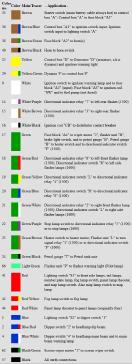
Wednesday January 3, 2018:
It looks like one of my web pages with a graphic presentation of Lucas wiring color codes is likely to be published in an upcoming issue of MGA! by NAMGAR.
 Had some correspondence today with a bloke who has what appears to be a 1500 style MGA Twin Cam roadster Had some correspondence today with a bloke who has what appears to be a 1500 style MGA Twin Cam roadster
 with a Car No. plate and title papers for a MGA 1600 Coupe. He is diligently trying to confirm that it is a Twin Cam, which it probably is, but he can't seem to come to grips with the idea that it is a subject of a "creative restoration" (nice term for a tag and title transplant) of a pushrod engine Coupe. It would of course be worth considerably more if it still had the number tag and title from the original Twin Cam car.
with a Car No. plate and title papers for a MGA 1600 Coupe. He is diligently trying to confirm that it is a Twin Cam, which it probably is, but he can't seem to come to grips with the idea that it is a subject of a "creative restoration" (nice term for a tag and title transplant) of a pushrod engine Coupe. It would of course be worth considerably more if it still had the number tag and title from the original Twin Cam car.
Thursday January 4, 2018:
Spent some time doing something I haven't done for more than three years, making a tally of the number of web pages in the tech section of this web site. Not quite up to letting the cat out of the bag just yet, but it is a lot more than the 3000 pages it had a few years ago.
Friday January 5, 2018:
Not having moved very far in the past month, we were back to Tech Central again today. Some guys about to make an alloy side cover for the Austin B-series engine (Z-Magnette/MGA/MGB). Cleaning caked together damp walnut shells out of the sand blasting cabinet. And putting some more time into assembly of the Miata.
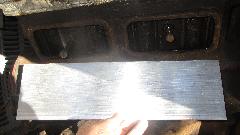

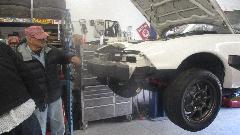
Thin plastic fender liners. Thin plastic under chin splash pan (reminds me of the thick paper pans in MGB and Midgets in the 70's). Slightly thicker plastic brackets for support of ends of the bumper cover, weighing just a few ounces each.
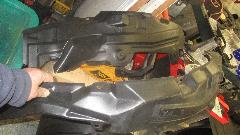
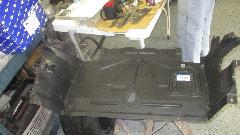
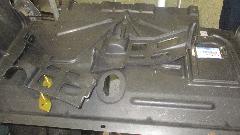
Thick rubber cover in front below the headlight. Pretty sure this is just an appearance item, not a splash guard or air director. Very thin rubber bits attached with plastic snap rivets, we think are air baffles, just not sure why they bothered. And finally turn the thick plastic bumper right side up (note incorrect photo two rows up) so the styrofoam shape saver plug fits right. Yes it is a plastic bumper, intended to crush on impact for energy absorption. One good bump means it would need to be replaced. More on this later.
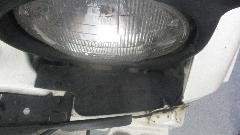
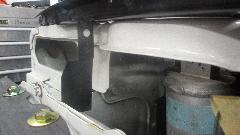
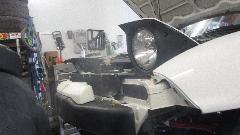
Saturday January 6, 2018:
Here we have the plastic bumper (the black part). Mind you there is no steel reinforcement inside of the plastic part, just some sheet metal behind it. Then an inside view of the plastic bumper cover. There is a thin metal bracket along the top edge, and a small metal bracket with two threaded studs high inside each end (close to parking lamp apertures). The black plastic part that looks like a chin spoiler is a stiffener, which includes air ducts (apparently for brake cooling). There are a few Tinnerman fasteners with sheet metal screws to go inside the main air inlet and at the bottom for mounting. Otherwise the whole assembly is held together with plastic push pins, and it may weigh about five pounds.
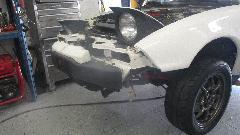


On each side there will be two thin metal braces, like heavy wire with screws at each end. The parking/turn signal lamps attach to the cover with Tinnerman fasteners and sheet metal screws. When installed it may look like a bumper, but it is just an aerodynamic fairing that can be flexed with finger pressure. It might survive a 2-mph bump by flexing, but I suspect it would be suceptible to cracking in cold weather. Apparentlly it meets requirement for 2-mph impact with damage limited to the bumper parts only, no damage to the body structure. Makes me wonder what repair cost would be after the 2-mph impact, when you buy all plastic parts from the dealer.
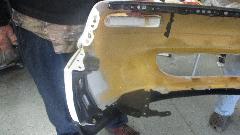
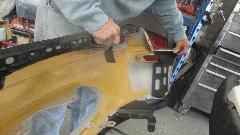
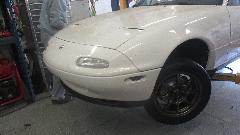
Sunday January 7, 2018:
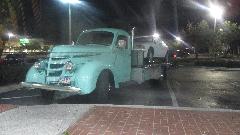
Most of the day spent posting the CMGC January newsletter on the club web site, and catching up with photos and notes from the week end.
And then there was this rig parked outside. Gotta love it, a vintage International truck carrying a modern car.
Monday January 8, 2018:
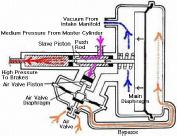
Fielding tech questions about dash lamp bulbs, MGA Coupe door assembly, brake fluid, clutch release bearings, and power brake boosters (including a nice dissertation on possible failure modes for the power booster). Makes you think about maybe not installing extra parts on your car, to avoid possible future failures and additional maintenance problems.
Tuesday January 9, 2018:
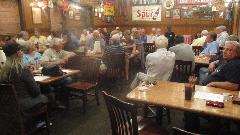
Tech chat about ignition coil, distributor mounting, MGA Coupe door assembly, brake light wiring faults. Then an evening visit with British Car Club of Southwest Florida. Been here before. Met a new guy in the car park on arrival, introduced him at the meeting, got him signed up as a new member. He has an MG TF that may want some attention a little later.
Wednesday January 10, 2018:
Tech questions on the Moss Motors replacement MGA steering rack, excess oil pressure, replacement MGA rocker panels, and another historic MGA drag race car. Then I was getting a good start on a new web page for cross reference list for MGA Twin Cam timing cover seal, but got messed up midway and will have to start over. Bummer way to end a day.
Thursday January 11, 2018:
Heavy day on a new web page for a Faulty Replacement Part, a bad water pump from Victoria British, intended for early MGB 3-main bearing engine, but out of speck so it cannot physically be installed. Also some discussion about gearbox layshafts and needle bearing upgrades. this all mixed in with a bad day with WiFI connections failing regularly hindering progress (it happens sometimes).
Friday January 12, 2018:
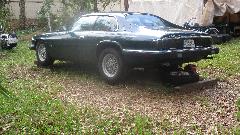
In southern Florida, winter is not only driving season but good working weather as well, so always something going on at Tech Central on Fridays. The big Jag was idle in the morning, but the owner popped in late in the day to delay our departure for a short chat. Got the small animal nests vacuumed out from on top of the engine, but still needing to remove the fuel tank from the boot.
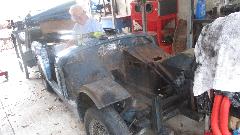 The Spridget was having serious surgery to replace parts of the underbody and floor, lots of abrasive cutting today.
The Spridget was having serious surgery to replace parts of the underbody and floor, lots of abrasive cutting today.
 Then we got on with the little chore we missed last week, changing two U-joints in an MGB propshaft. The guys were struggling with the first one for a while, until they saw the proper sequence for disassembly. Then they got the spider in wrong way around with the grease fitting in an inaccessible orientation, so we got to do that one over again. The second one came off without a hitch, and a few people ended up certified for replacing U-joints. The sliding spline was one spline (36-degrees) out of phase, and it may have been that way during many years of past use. But it only took a minute to reorient that properly by hand, no tools required. Then we got on with the little chore we missed last week, changing two U-joints in an MGB propshaft. The guys were struggling with the first one for a while, until they saw the proper sequence for disassembly. Then they got the spider in wrong way around with the grease fitting in an inaccessible orientation, so we got to do that one over again. The second one came off without a hitch, and a few people ended up certified for replacing U-joints. The sliding spline was one spline (36-degrees) out of phase, and it may have been that way during many years of past use. But it only took a minute to reorient that properly by hand, no tools required.
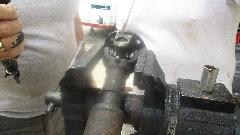

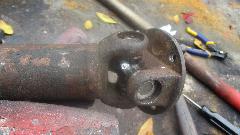
Paint dry, and parts in, so the Alfa Romeo brake calipers were assembled in short order.
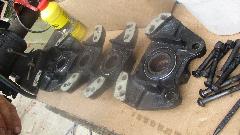
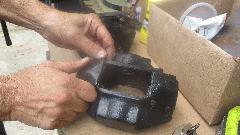
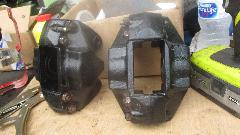
In late afternoon, we had time to check out the Miata reassembly project. The front end we finished, including fender liners in place. Fuel injectors were sticking, no click with a 9-volt battery. So they got soaked in solvent for a while, and a good rap on the side would free them up to go click with the battery. With a clean fuel tank, fresh fuel and new battery, it fire up in short order, ran a little rough at first but smoothed out nicely after a few minutes. Must be getting close when figuring out where to stow the traveling jack. It still needs front end alignment and brake bleeding, but it moved a few feet under its own power for the first time in 20 years.
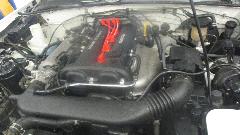

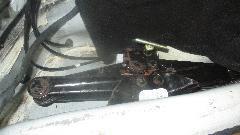
Saturday January 13, 2018:
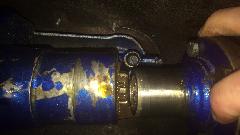
Interesting tech chat about a mismatched propshaft in an MGA. The car had been in boxes for 25 years, then restored two years ago, but apparently not driven much. Then the car was inherited by son-in-law who wants to get it on the road. It turned out to be an MGA 1600 with 1500 engine and gearbox, and the 1600 type propshaft was not going to work. Easy fix though, just buy a 1500 type propshaft.
 Waste sometime chatting about electronic ignition and spark plugs and spark polarity again. Waste sometime chatting about electronic ignition and spark plugs and spark polarity again.
Sunday January 14, 2018:
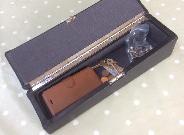
Posted a new tech page on MGA center arm rest with a stowage box inside.
 Spent more time on another tech article about repairing broken weld studs on back of the dash panel for MGA, perhaps without having to burn and repaint it. Spent more time on another tech article about repairing broken weld studs on back of the dash panel for MGA, perhaps without having to burn and repaint it.
 More tech chat about MGA body sill replacement, and body-off repainting. More tech chat about MGA body sill replacement, and body-off repainting.
Monday January 15, 2018:
Today I got into a discussion about electric cars, and electric MGA. I have not been ignoring this subject, but previously it had not much to do with MGA tech or restoration or keeping the cars on the road, so the topic was somewhere else in the web site, not in the tech section. Now that Lithium-Ion batteries are real, and there are prospects for other batteries with even higher power density, the idea of electrifying an MGA (and cars in general) is garnering a bit more interest, at least enough that there are by now a few of them on the road. There is now a company specializing in restoration of vintage cars and updating technology of suspension parts, and installing electric drive components in the process (notice electric drive is nearer end of the sentence).
 So I spent much of the day adding Electric MGA Conversion Cars to the Electrical Restoration and Modification tech section on my web site. Only a few new pages, but I did move 17 pages of information from elsewhere into this tech section. This was involving an MGA electric drive conversion from UTA (University of Texas, Arlington) that was done way back in 2001 (and almost forgotten by now). The purpose of that project was to develop an electric conversion scheme that could be adapted to any car (not just the MGA). Now we have a new company that is doing it in practice, so we may have a few more electric MGA in the near future. So I spent much of the day adding Electric MGA Conversion Cars to the Electrical Restoration and Modification tech section on my web site. Only a few new pages, but I did move 17 pages of information from elsewhere into this tech section. This was involving an MGA electric drive conversion from UTA (University of Texas, Arlington) that was done way back in 2001 (and almost forgotten by now). The purpose of that project was to develop an electric conversion scheme that could be adapted to any car (not just the MGA). Now we have a new company that is doing it in practice, so we may have a few more electric MGA in the near future.
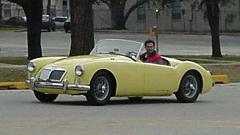
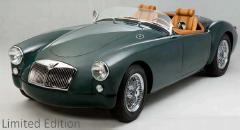


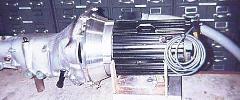
 2001 UTA electric MGA left. 2001 UTA electric MGA left.
 2017 MGA EV Roadster right. 2017 MGA EV Roadster right.
|